Navigation
The Somogy Provincial Association for Nature Conservation
“Somogy” Provincial Association for Nature Conservation (Somogy PANC) was founded in 1980. In the beginning it was pursuing classic nature conservation activities. It was successfully brought into being through the acquisition and nature-friendly management of the lands that were of key conservation importance in the Somogy region of Hungary and the establishment of sustainable livelihood projects.
The primary aims of Somogy PANC were conservation of nature in a strict sense, and more specifically the protection of some species such as the European otter and the white-tailed eagle.
Location:
Boronka region, Hungary
Problem Overview:
Land management practices of the eighties were causing the degradation of valuable habitats, the introduction of immigrant species of plants on the sandy grasslands, the destruction of traditional methods of land management and the loss of local traditions.
“Somogy” Provincial Association for Nature Conservation (Somogy PANC) was founded in 1980. In the beginning it was pursuing classic nature conservation activities. It was successfully brought into being through the acquisition and nature-friendly management of the lands that were of key conservation importance in the Somogy region of Hungary and the establishment of sustainable livelihood projects.
The primary aims of Somogy PANC were conservation of nature in a strict sense, and more specifically the protection of some species such as the European otter and the white-tailed eagle.
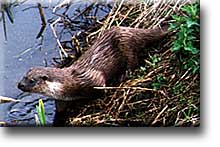 |
This basic goal protection could not be achieved if only the species themselves and not also the habitats were protected. We realized that the protection of habitats can only be achieved if they are protected not just as separate "mosaics," but as a whole chain of habitats. Thus, SPANC has undertaken the sustainable development of the whole region. The area now encompasses thousands of hectares extending from south of Lake Balaton to the River Drava.
SPANC has become a complex programme involving sustainable development, land acquisition and preservation, habitat management and protection, job training, preservation of historic buildings and traditions, providing local employment, running an education center and visitors' center, and providing for eco-tourism in the region.
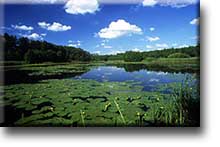 |
Somogy county’s landscape provides habitats for many endangered species of plants and animals. Oak forests, alder swamps, ponds, sandy grasslands, woody pasture lands diversify the landscape. Its ponds and swampy areas provide habitat for waterfowl. These ponds are the westernmost borders of the breeding areas of Ferruginous ducks. The biggest Hungarian pond tortoise populations can be found here. In the neighbourhood of ponds and water courses, the rare and endangered white-tailed eagles and black storks are nesting. Otters can find a very good habitat and food here as well. Along the creeks, there are alder galleries, at some places ash, oak and elm woods. In the alder woods, along the water courses, many flowers such as snow-flake, yellow day lily and Siberian iris are blooming. One of the rarities of dry sandy grasslands is the black pasqueflower (Pulsatilla pratensis subsp. nigricans). In the sandy walls Bee-eaters nest.
The Beginnings:
Due to the influence of the political, economical and social changes of the 1970s, the government agreed to the establishment of the first conservation non-government organization (NGO), the Hungarian Ornithological Society established in 1974. In a short time its popularity quickly grew, first among the youth and well-educated. Later more and more people from all segments of the society joined.
Some enthusiastic conservationists founded the local group of the Hungarian Ornithological Society in Somogy county in 1980. This group consisted of university students and secondary school pupils. They increased their environmental awareness and encouraged others to think along the same lines. Conservation clubs were founded first in the county town, Kaposvár, then in the whole county, and their activities became more and more popular.
Then, as a result research on wetlands, IUCN - The World Conservation Union decided to hold its conference on otter conservation in Kaposvár and one of the hosts of the program was the Somogy group of the Hungarian Ornithological Society.
This conference had great significance in the life of the group since the biggest international conservation Non-government organizations (NGOs) sent their representatives. One of the conclusions of the conference was that the otter population of Somogy is of key importance for the survival of the European otter population, and the government organizations and NGOs should work together to ensure its protection.
Parallel with the otter protection activity, SPANC developed a "Black Stork (Ciconia nigra) and White-tailed Eagle (Haliaetus albicilla) Protection Program."
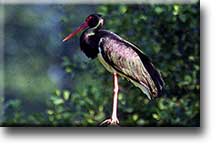 |
From the beginning, one of the most important tasks was the protection of the breeding sites of birds and other animals threatened by extinction in Europe. Artificial nests were constructed to encourage breeding of these endangered species.
In the course of undertaking these protective measures, we had the important realisation that species protection can only achieve its aim if we protect the habitats themselves. Thus, the White-tailed Eagle Protection Program was elaborated upon to become a national program in 1989. As a result, we were invited to the East-West Symposium of the European Haliaetus Association and our international relationships grew wider.
The organization raised a protest against the destruction of nature. At first, the attention of the public was drawn to the endangered habitats through newspaper articles and other publicity. Our early protest against clear-cuts, meadow and grassland fallowing, senseless drainage, and wanton usage of chemicals struck us as fighting windmills since many profit-oriented organisations cited political and economic defences for their damage to nature. Furthermore, some people described our initial activity as swaying the public and as groundless cavilling.
On one of the fieldtrips a revolutionary perception struck us: “If we are going to protect white-tailed eagles, black storks and otters, there is no other solution than to buy their habitats in Boronka, Mike, Petesmalom and Csokonyavisonta.” This sounded quite unreal in 1988.
During our discussions on the protection of habitats we realised that we should prioritise the most important tasks. Thus the “Somogy Wild Water Program” came to life which aimed primarily at the protection of the wetlands of in Inner-Somogy; wetlands of importance both within and beyond Hungarian borders.
The program was recommended to our Austrian, German, Swiss and Dutch partner organisations who thought it worthwhile and offered to help us. Lately, they started referring to our activity as an Eastern-European example in their publications.
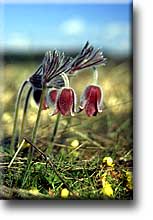 |
From one day to the next we got into a very unique situation where we had to pursue land management along the guidelines of nature conservation. It became obvious to us that without the support of the local inhabitants of the surrounding villages no successful conservation work could be carried out. It order to secure their support knew we would have to demonstrate the value of the organization's work as farmers and as employers.
In Autumn 1988 the first news on privatisation came like a bomb-shell, 180 ha ponds, the fishery of Mesztegnyõ was for sale! These were the ponds of our dreams with extremely rich wildlife, in a beautiful environment in the woods situated between Nagybajom and Mesztegny. Furthermore, two years earlier we had made the first move initiating the designation of a Landscape Protection Area there. If the ponds were to pass into somebody else’s hand, the dream would most likely be all over since most economic considerations of the time did not take the value of nature into account.
Our partner organisations were informed about the opportunity to purchase the land. In 1989 our group was listed as an independent legal entity - Somogy Provincial Association for Nature Conservation - by the court. This designation opened for us the possibility of land acquisition.
Then, in 1989, a historic moment in the life of the Association came about with the purchase of 180 hectares of fishpond area located in the valley of the Boronka-creek. With the help of our supporters (first the Austrian WWF, then the Swiss Ornithological Society, Euronatur and the Ministry of Environment and Water Policy) we were able to pay the purchase price and we became owners. (Previously there was not any state support given to conservation investments.)
SPANC was the first organization in Hungary to buy land for nature conservation purposes, so that practical conservation work could be performed.
With the purchase, the protection of some very important habitats – the fishponds between Nagybajom and Mesztegnyö – became possible.
In 1991 the Boronka Landscape Protection Area was established and by a ministerial order we were given the task of managing it for conservation. This is the first occasion when an NGO was given State duties to perform.
For the protection of the Landscape Protection Area and the formation of necessary co-operation, we contacted the local governments of the surrounding villages and introduced our plans to them. We explained the economic potentialities in the natural potentials of the area, which can be very attractive concerning the formation of quality eco-tourism in the area. We can only make capital of this natural potential if the basis of the shaping of the concept of rural development and the basis of the selection of aims is sustainability. On our initiative a union of the villages surrounding the Landscape Protection Area was formed under the name of "Bridge over Boronka." This union of the local governments now operates as an association.
So part of the “Somogy Wild Water Program”, the Boronka project had begun. The Hungarian “private” nature conservation initiative was born by these actions. The Boronka Landscape Protection Area now consists of 8000 ha.
Frequent and close co-operation has developed between conservation authorities and SPANC. The organization's activity met with a very favourable reception both in Hungary and abroad. We received more and more visitors. The political judgement of SPANC activity was also good, allowing SPANC to survive recent political changes.
In 1993, during the privatisation of the state property - with significant help of foreign partner organizations and individuals - the organization became owner of another approximately 300 ha ponds. So the ponds of Mike, Petesmalom and Csokonyavisonta were passed into the ownership of Somogy Provincial Association for Nature Conservation.
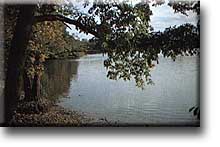 |
It must be borne in mind that the purpose of land acquisition is the long term conservation of nature values. These pond systems appear to look like natural ponds but they are artificial constructions thus regulations and statutory provisions apply to their maintenance and operation. Observing these regulations - on water management, maintenance works, taking into account 50 lesser and greater ponds, carries significant costs and involves many responsibilities. The biggest responsibility is that if the ponds are not able to function for any reason, the associated wildlife is endangered. Both our material and moral responsibilities are large
In order to share and gain experience on site conservation and management, we organised international conferences, such as on agriculture, nature conservation, and eco-tourism.
We established closer and closer relationships with the local municipalities situated in our operational area. Wider sections of society became acquainted with our work. By involving local people with the implementation of SPANC site management tasks, the organization became, and is ever more so, a significant employer in the area.
The Drava Project:
During the process of privatisation, with recent land purchases SPANC became the owners of the most significant wetland areas in Inner-Somogy that connect the Lake Balaton with the Dráva River. This chain of habitats functions as an ecological corridor between the two basins, providing the necessary flow of genetic information for sustaining the biological diversity.
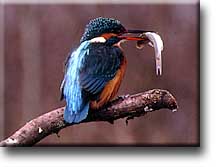 |
The Drava Project was a success, too - both at a domestic and international level. We spoke up for protecting the nature values of river Drava, against the construction of a barrage emphasising the opportunity and importance of the establishment of a Croatian-Hungarian National Park. The matter had a political aspect, too. After initial support for the barrage construction more and more people took a stand against its construction, supporting the designation of a national park - a decision ultimately arrived at by Parliament.
The Principal Sustainable Development Projects of the Somogy PANC:
Inner-Somogy is an economically disadvantageous region. Unemployment and the number of the unskilled unemployed gypsies are high. The fish farming and the grazing of the ancient breed of domestic animals and the operation of the central office created new employment possibilities. We also developed the plans for eco-tourism and rural development to provide additional income for some of the families. The natural and cultural values of the reserves offer unique experience for the visitors.
The realisation of ecological aims joins with the results in the fields of culture, protection of historic buildings, rural development and social activities. Together these activities mentioned further positive developments in both the economy and in local attitudes toward the preservation efforts of SPANC.
Sustainable Development Activities Overview:
The major policy of the project is sustainability. The four fishpond-systems of about 500 hectares, 200 hectares of grassland and fields, 1000 m2 historic castle, two other historic buildings and one farming centre for each fishpond-system have become properties of SPANC. The centre of our Association is the Kund castle in Somogyfajsz, which operates as an information and education centre on nature conservation.
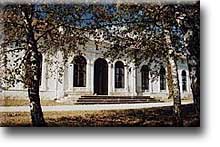 |
Near the castle there are big grasslands that own the characteristics of the once typical acid sandy grasslands of the Inner-Somogy region. To avoid the extinction of numerous naturally significant species we started grazing in these areas. This method of management begins with the reintroduction and breeding of an ancient domestic breed of cattle, the Hungarian grey cattle.
Parts of the finances necessary for carrying out our practical nature conservation tasks are covered by the income from fishing, grazing and eco-tourism. Through its varied activities, the organisation seeks to preserve the natural-cultural heritage entrusted to them. They find that the preservation of traditions also furnishes them with a good basis for tourism which relies on the protection of nature.
Fish Pond Management:
The use of fishpond areas bought on conservation purposes differs from the general methods of fish farming practices. Our major task is to avoid disturbance but sustain and protect these habitats. The income that comes from the fish farming carried out by the guidelines of international conservation, is re-invested into the management, maintenance and improvement of the areas.
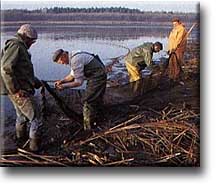 |
SPANC's four fishpond areas are essential parts of the “ecological corridor” between the river Drava and the lake Balaton. They are functioning as “stepping stones” enabling the migration of species and the exchange of genetic information. They are permanent feeding grounds for waterfowls, black storks, white-tailed eagles, otters etc.
SPANC's primary nature conservation goal is to protect these habitats and provide the basic vital conditions for the animals living here such as breeding sites and food.
In the past there were hundreds of natural ponds in Somogy county. In the last century, during the regulation of water-ways huge areas were drained. In these areas, waterfowl and other animals whose lives were connected to wetlands, lost their habitats. The artificial ponds which were constructed at the end of the 19th century took over the role of the natural ponds. From the time of the construction of the ponds, the ponds were utilised by intensive fish farming. Now they are the only refuges for these species in the region.
Since SPANC bought all of these ponds in 1993, the fish farming has been subjected to conservation goals and the "laws of sustainability."
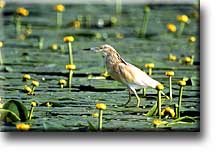 |
Because these ponds are artificial, they have to be artificially maintained. The sluices need to be checked regularly, as do the dams, water inflows and outflows. Repair must be carried out when necessary. The organization provides waterfowls and otters with food by maintaining the right water level and with protection of nesting sites such as on the breeding islets.
The ponds are split into different zones, in the core areas we do not feed the fish at all. In other parts only limited feeding is permitted. The aim is to minimise disturbance and interference.
The fish farming is extensive. The maximum amount of fish we can harvest is 300 kg / ha (300 kilogram per hectare). The income from the fish farming is used to cover the management expenses and otherwise re-invested into nature conservation.
According to the organization's plans the system will become self-sustaining.
This project illustrates that fish farming and nature conservation are not necessarily conflicting interests. By employing "nature-friendly fish farming practices" we can manage the ponds for nature conservation and protect the habitats. Furthermore, we are able to offer employment opportunities for the local inhabitants and provide the local markets with healthy fish.
Sustainable Grassland Management:
Over the last centuries, grazing woods characteristic to Inner-Somogy were created by the development of animal grazing. The establishment of grazing areas in the formerly contiguous forests shows an increasing tendency to use them for grazing from the middle of the XVII century. Extensive pig farming was the leading branch in animal husbandry till the middle of the XIX century. The proportion of sheep and cattle raising kept increasing.
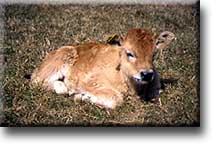 |
From the 1950s, raising of large animals became typical. Then, in the 1970s, because of the worsening marketing conditions, the grazing of livestock by private farmers began to rapidly decrease. Recently, the raising of grazing animals practically does not exist in Inner-Somogy. The unfavourable ecological and economic effects of this resulted in an almost irreversible process.
Part of the former great pasture land was ploughed creating a substantial area of low quality land that can no longer be economically cultivated. Other areas were afforested with acacia, black pine or poplar trees which were not suitable to the local biodiversity. The abandoned pasture lands became weedy and overgrown with bushes. Many botanical and zoological values characteristic to these grazing woods and sandy grasslands have already disappeared or are in the process of disappearing.
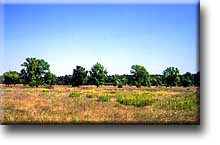 |
SPANC aims to conserve the ecological conditions of the survived grazing woods and grasslands by reutilization of the grasslands, conservation of their specific features, renaturation of the spoiled grass communities, reintroduction of grazing - as a management tool.
Sustainable grassland and pasture land management.
If the sustainable grassland management is carried out according to the traditions of the region, by keeping ancient Hungarian domestic animal species and breeds, then the land management fulfils a gene-conservation function, as well.
In the course of land purchase, in addition to buying wetlands SPANC bought 200 ha grasslands near Somogyfajsz.
The meadows around Somogyfajsz are the last remnants of the Hungarian acid sandy grasslands with vegetation which is typical of this type of soil. From a botanical point of view, the area is very valuable with many protected species, such as Pulsatilla pratensis var. nigricans and Orchis morio. In the past, these grasslands were maintained by traditional, extensive animal husbandry. Grazing kept down the weeds.
During the last decade grazing animals almost disappeared from the village. Because of the lack of grazing, weeds became very numerous. The original vegetation started changing and some very dangerous immigrant species of plants appeared such as acacia (Robinia pseudo-acacia), Solidago and Phytolacca americana. Acacia trees impoverish the soil and throw shade over other plants. In order to conserve the original vegetation we had to find a solution. The solution was to reintroduce grazing animals to the region, specifically the "Hungarian grey cattle,” an ancient domestic breed of cattle.
In December 1996, SPANC bought nine first-gravid grey cattle and started its programme with them and their calves.
Activities:
- Setting up a herd of adequate quantity of animals and species composition. (In case of cattle: 1 animal / ha). Acquisition of animals and their breeding.
- Construction of traditional pens and wintering places for the animals.
- Planning and realisation of grazing as a management tool.
- Employing and training mainly socially disadvantaged people.
Thanks to this grasslands project SPANC can:
- Inhibit the degradation of the valuable plant communities
- Find a long-term solution for the conservation of this species' rich grassland habitat
- Make the local inhabitants aware of the importance of these biotopes and gain their support
- Preserve a gene bank of grey cattle
- Set up a model programme in the region
- Revive cultural identity by traditional land use and maintenance such as grazing
- Realise a sustainable use of the site
Promoting Cultural Diversity
Somogy PANC conserves areas and places of natural and culturally significant architectural value. It has purchased and maintained threatened habitats of species of European importance as well as historic monuments connected to them.
These historic monuments are the manor-house of Somogyfajsz which was build in 1872, a 200 year old school building in Somogyfajsz, and a 100 year old school building in Csokonyavisonta. Thanks to SPANC, these historic monuments have been rescued from dereliction.
The manor-house at Somogyfajsz now serves as the SPANC nature conservation and information centre and is used for scientific and cultural programs.
In reconstructing its historic monuments, SPANC has sought to restore them to their original state. Their plans call for not only historically accurate restoration of additional buildings, but also use of alternative, sustainable energy resources.
The colourful life of a herdsman has generated a rich culture of traditions and art. SPANC works to preserve the cultural heritage as well as historic preservation in Somogy county. In doing so, they also provide their guests with the opportunity to familiarise themselves with the traditional life of former shepherds.
The Role Of Eco-Tourism In Sustainability
Eco-tourism creates employment possibilities for the local people which is very important because 60% of the able-bodied population of Somogyfajsz is unemployed. It is their interest to protect the natural resources of their close surroundings which attracts visitors and yield an income.
Our varied activity, the natural-cultural heritage entrusted to us, and the preservation of traditions furnish a good basis for tourism which rests on the protection of nature.
The natural values of its reserves, the diversity of species, the country itself, and the extensive, traditional farming offer unique programs for the visitors. As part of its informative program, SPANC teaches visitors the values of nature as well as conservation management practices. Thus, they enhance their guests' knowledge of nature and nature conservation and give them a closer understanding of ecological problems caused by humans.
Sustainability - Creating Employment Opportunities
SPANC greatly stresses involvement of the local inhabitants in its program. Since efficient nature conservation relies on the understanding and participation of the local inhabitants, the organisation tries to make them interested in the conservation of the nature and involve them in its work.
Tourism creates employment possibilities for the local people. It is in their interest to protect the natural resources of their close surroundings which attracts visitors and yield an income.
The county of Somogy, is one of the least populated parts of Hungary and from an economic standpoint is a very poor and disadvantaged region. The rate of unemployment is and most of the people are unskilled.
In 1996 , SPANC started a project: “Gypsies as land managers” which was supported by the PHARE-LIEN programme. The project had two objectives:
- sustainable land use
- improved integration of an ethnic group (gypsies) into society.
With the extensive management of the fish-ponds owned by the organisation, they created new and permanent employment possibilities for gypsies and the other most economically deprived families.
Thanks to the project, the social isolation of the gypsies is reduced and the economic situation of the families has improved.
SPANC set up a fruitful relationship with domestic, foreign and international organisations.
In course of obtaining local people’s confidence, it was important that we set up our programme step by step so as to achieve the set objectives. For local inhabitants, sustainability was very important; that is, we provided secure jobs for ten families.
Volunteers:
Volunteers play an important part in the activity of the organization. Every year volunteers arrive from different parts of Europe and carry out practical nature conservation work. For example:
- In July 1999 British Trust for Conservation Volunteers (BTCV) members helped us in the management works of our Petesmalmi Reserve (the first Hungarian Otter Park).
- Every Summer the Round Square schools (Germany, Canada, England, Switzerland) send their pupils to our reserves, where they build bird observation huts, boardwalks, clean pathways in the forest etc.
International Camps:
For years we have been organising international camps in our reserves where the visitors learn about rare plant and animal species and can practice nature conservation activities. They also further the work of the organization by making contributions.
The biggest proportion of our visitors consists of people having a scientific interest, such as ornithologists. Hungarian and foreign students spend their weeks of practical studies here doing scientific research for their thesis.
We lay great stress on involving the local inhabitants in our program. We try to make them interested in the conservation of nature since efficient nature conservation can be put into practice only in this way.
Organizational structures, decision-making process:
At the beginnings (setting objectives, creation of a social base, starting the main activities) an association structure was convenient. Later, as the scope of activities became wider, the use of other organizational structures became necessary, as well. For example in order to manage the work relating to farming, an Ltd. was set up. In case of other tasks such as land acquisition, a public foundation type was more convenient.
CONSTRAINTS
External financial support was crucial to the realisation of the program. Factors of uncertainty emerged continuously during the project - mainly relating to financing land acquisition, investments and maintenance works. In Hungary, there are many different sources of basic and target subventions (sources of funding), but it is always difficult to insert complex programs into the strict priorities. (Since 1998, a positive change has begun).
It was a steady task to obtain the local people’s confidence and support. It is always difficult to finance operational costs, since the subventions are project-oriented.
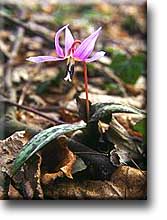 |
The system has been established and it works well. Since it does not have any past and well-proven practice, the organization makes determinations for its actions based on laws, tasks, and responsibilities undertaken by the organization and in accordance with its economic circumstances.
Realising the land acquisition conception of the “Somogy Wild Water Project”, the chain of SPANC wetlands runs from lake Balaton to river Drava. In these areas, the organization has to conserve those traditional farming methods that enabled in the past and now enable the survival of wildlife. In order to provide funds for the maintenance of these areas, SPANC uses farming practices which are in accordance with the protection of nature values.
RESULTS
The real challenge of the project was that it should have met both the conservation requirements and the conditions evolving from ownership as well as the statutory provisions.
In our programme, sustainability in an ecological sense means conserving the ecological condition and wildlife of the area which we bought with the aim of nature conservation on a long-term basis:
- On the ponds, by extensive fishing we provide a food base and habitat for species which are connected to the ponds. The income from the fish farming covers the expenses of the management of the area, providing for local employment, and is re-invested into nature conservation.
- We manage our acid sandy grasslands by grazing ancient Hungarian domestic breeds of cattle and sheep. From this animal husbandry we gain a moderate income which is also re-invested into conservation.
- We introduce the natural and cultural values of our reserves to the visitors. We offer diverse programs to them. Eco-tourism creates employment possibilities for the local people thus the protection of the nature is even more in their own interest.
So sustainability in an economical sense means to SPANC that in addition to protecting the nature we earn income and by using this income the system can become self-sustaining.
THE PURCHASE OF THE MOST SIGNIFICANT, MOST DIVERSE WETLAND AREAS WITH CONSERVATION PURPOSES IN 1989-1998.
Characteristics:
- areas with rich natural values
- the areas are capable for traditional methods of land management without introducing exterior resources
- the products of the farming can be sold locally (fish, reed)
- the lands can be used for two different purposes at the same time: traditional farming and eco-tourism
- the natural potential means economical potential as well
The areas:
| The grasslands in Somogyfajsz | 200 ha |
| Fishpond-system in Boronka | 180 ha |
| Fishpond-system in Mike | 60 ha |
| Fishpond-system in Petesmalom | 170 ha |
| Fishpond-system in Csokonyavisonta | 90 ha |
Total: | 700 ha |
The manager of the L.P.A. is the Somogy PANC.
Our plans call for the use of mini-hydro and solar energy. While they are only a very small segment of our whole project, we wish not only use these sources to decrease our costs, but also, and more importantly, we would like to demonstrate the importance of these alternative energy sources to the public and to form their attitude in a way that they understand that nuclear energy can be replaced with environmentally friendly methods.
Many domestic and foreign publications were published on Somogy PANC and its programme.
Evaluation:
(by Öko Rt., Budapest and EUROPROJECT GmbH, Austria, 1998 from "Decentralised Environmental Planning and Management)
How valuable is the conception as an example
From a local initiative, such a programme evolved that could be a model on international level - It can be a model mainly for regions rich in nature values
Feasibility for wider application
The principles and methods can be examples for everybody, but the particular way of realisation can be different pending on the local potentialities - Without a well prepared, resolute organization and without a starter exterior financial injection, it is difficult to guarantee results.
Handling environmental problems as priorities
Mainly from the point of view of the sustainable development possibilities of areas rich in nature values
Cost efficiency
At the beginning, investments are needed and only complex land utilisation brings profit (e.g. fish farming, tourism)
Web Links:
SPANC Website: http://www.stvsz.hu/
Submitted by:
President: Tibor Tömösváry
Project Coordinators: Hivatal Nándor, Nándor Hivatal jr. and József Hunyady
email:spanc@mail.matav.hu
Somogy Természetvédelmi Szervezet
Somogy Provincial Association for Nature Conservation (SPANC) H-8708 Somogyfajsz, Kossuth L.u. 62.
Hungary
Tel.: (36) 85 337 146
Fax.: (36) 85 337 053
Barbara Eros
barbaeros@hotmail.com
A Word of Appreciation:
"We would like to thank Eurosite and MATRA for their effort in relating the SPANC effort to their Central and Eastern European Programme. In course of this programme we had the opportunity to take part in some very constructive and practical workshops where we could extend our knowledge in general and specific site management issues with European colleagues.
We would like to highlight the last workshop of the series that was superbly organized by Natuurmonumenten and its topic was project management.
Eurosite deserves credit for our twinning programme with Suffolk Wildlife Trust. We visited their reserves in February, and we were happy to see the similarities between our reserves.
We are still in touch with our Dutch friends from Brabants Landscap and it was our pleasure to get acquainted with their new representative in European matters this summer.
We started a fruitful co-operation with ECOLOR, a French organization. They sponsored even financially our projects. Thanks very much for it! It was a great help.
We must mention our German partners, the boarding schools from Salem and Markdorf and the other Round Square Schools from Switzerland, Canada and England. Their enthusiastic teachers and pupils help us a lot every summer in practical nature conservation.
Special thanks got to the local group of the BUND Markdorf for their latest financial support in purchasing new gray cattle for our grassland management project.
We have a lot to be thankful for the leadership of the German association "Partner der Umwelt" in carrying out our joint projects.
And last but not least thanks to BTCV for organising a successful working holiday in our Petesmalmi Reserve."
- Login to post comments

Search
Latest articles
Agriculture
- World Water Week: Healthy ecosystems essential to human health: from coronavirus to malnutrition Online session Wednesday 24 August 17:00-18:20
- World Water Week: Healthy ecosystems essential to human health: from coronavirus to malnutrition Online session Wednesday 24 August 17:00-18:20
Air Pollution
- "Water and Sanitation-Related Diseases and the Changing Environment: Challenges, Interventions, and Preventive Measures" Volume 2 Is Now Available
- Global Innovation Exchange Co-Created by Horizon International, USAID, Bill and Melinda Gates Foundation and Others
Biodiversity
- It is time for international mobilization against climate change
- World Water Week: Healthy ecosystems essential to human health: from coronavirus to malnutrition Online session Wednesday 24 August 17:00-18:20
Desertification
- World Water Week: Healthy ecosystems essential to human health: from coronavirus to malnutrition Online session Wednesday 24 August 17:00-18:20
- UN Food Systems Summit Receives Over 1,200 Ideas to Help Meet Sustainable Development Goals
Endangered Species
- Mangrove Action Project Collaborates to Restore and Preserve Mangrove Ecosystems
- Coral Research in Palau offers a “Glimmer of Hope”
Energy
- Global Innovation Exchange Co-Created by Horizon International, USAID, Bill and Melinda Gates Foundation and Others
- Wildlife Preservation in Southeast Nova Scotia
Exhibits
- Global Innovation Exchange Co-Created by Horizon International, USAID, Bill and Melinda Gates Foundation and Others
- Coral Reefs
Forests
- NASA Satellites Reveal Major Shifts in Global Freshwater Updated June 2020
- Global Innovation Exchange Co-Created by Horizon International, USAID, Bill and Melinda Gates Foundation and Others
Global Climate Change
- It is time for international mobilization against climate change
- It is time for international mobilization against climate change
Global Health
- World Water Week: Healthy ecosystems essential to human health: from coronavirus to malnutrition Online session Wednesday 24 August 17:00-18:20
- More than 400 schoolgirls, family and teachers rescued from Afghanistan by small coalition
Industry
- "Water and Sanitation-Related Diseases and the Changing Environment: Challenges, Interventions, and Preventive Measures" Volume 2 Is Now Available
- Global Innovation Exchange Co-Created by Horizon International, USAID, Bill and Melinda Gates Foundation and Others
Natural Disaster Relief
- STOP ATTACKS ON HEALTH CARE IN UKRAINE
- Global Innovation Exchange Co-Created by Horizon International, USAID, Bill and Melinda Gates Foundation and Others
News and Special Reports
- World Water Week: Healthy ecosystems essential to human health: from coronavirus to malnutrition Online session Wednesday 24 August 17:00-18:20
- STOP ATTACKS ON HEALTH CARE IN UKRAINE
Oceans, Coral Reefs
- World Water Week: Healthy ecosystems essential to human health: from coronavirus to malnutrition Online session Wednesday 24 August 17:00-18:20
- Mangrove Action Project Collaborates to Restore and Preserve Mangrove Ecosystems
Pollution
- Zakaria Ouedraogo of Burkina Faso Produces Film “Nzoue Fiyen: Water Not Drinkable”
- "Water and Sanitation-Related Diseases and the Changing Environment: Challenges, Interventions, and Preventive Measures" Volume 2 Is Now Available
Population
- "Water and Sanitation-Related Diseases and the Changing Environment: Challenges, Interventions, and Preventive Measures" Volume 2 Is Now Available
- "Water and Sanitation-Related Diseases and the Changing Environment: Challenges, Interventions, and Preventive Measures" Volume 2 Is Now Available
Public Health
- Honouring the visionary behind India’s sanitation revolution
- Honouring the visionary behind India’s sanitation revolution
Rivers
- World Water Week: Healthy ecosystems essential to human health: from coronavirus to malnutrition Online session Wednesday 24 August 17:00-18:20
- Mangrove Action Project Collaborates to Restore and Preserve Mangrove Ecosystems
Sanitation
- Honouring the visionary behind India’s sanitation revolution
- Honouring the visionary behind India’s sanitation revolution
Toxic Chemicals
- "Water and Sanitation-Related Diseases and the Changing Environment: Challenges, Interventions, and Preventive Measures" Volume 2 Is Now Available
- Actions to Prevent Polluted Drinking Water in the United States
Transportation
- "Water and Sanitation-Related Diseases and the Changing Environment: Challenges, Interventions, and Preventive Measures" Volume 2 Is Now Available
- Urbanization Provides Opportunities for Transition to a Green Economy, Says New Report
Waste Management
- Honouring the visionary behind India’s sanitation revolution
- Honouring the visionary behind India’s sanitation revolution
Water
- Honouring the visionary behind India’s sanitation revolution
- Honouring the visionary behind India’s sanitation revolution
Water and Sanitation
- Honouring the visionary behind India’s sanitation revolution
- Honouring the visionary behind India’s sanitation revolution

